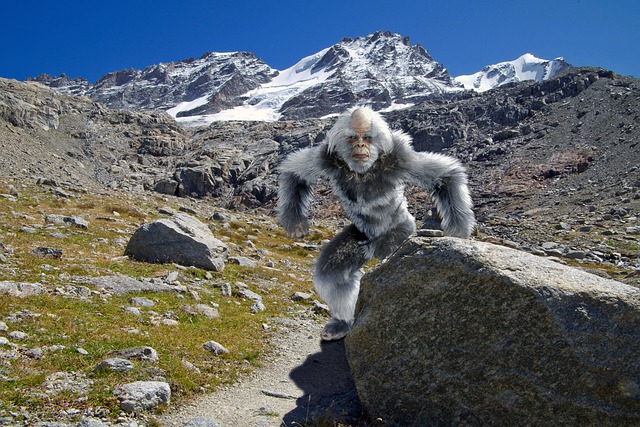The truth about the “abominable snowman”, the investigation that reveals the identity of the mythical yeti with DNA tests
It is a mysterious ape-like creature that lives in remote Asian mountains.
The yeti or “abominable snowman” , according to many legends, is part of popular mythology in Tibet and Nepal.
His alleged sightings have been recorded for centuries, his footprints have been detected and what some claim are remains of his body have been collected.
A team of researchers led by the American biologist Charlotte Lindqvist claims to have unveiled the mystery of the famous yeti and their conclusions will surely disappoint many enthusiasts of the legend.
Lindqvist, a professor at the Buffalo School of Science in New York and a visiting professor at Nanyang Technological University in Singapore, used DNA evidence to analyze remains attributed to the Snowman.
The remains from which genetic material was extracted included fragments of a femur , teeth, hand skin, hair, and faecal samples collected in caves in the Tibetan and Himalayan highlands.
“Of the nine samples, one turned out to come from a dog, but the other eight were from different bear species currently inhabiting the region, such as Asiatic black bears, Himalayan brown bears and Tibetan brown bears ,” Lindqvist told the BBC.
“The samples I examined correspond 100% to bears from the region. I have no doubt about that ,” said the researcher.
“Our findings strongly suggest how the biological underpinnings of the ‘yeti’ legend can be found in bears in the area, and our study demonstrates that genetics should be able to unravel other similar mysteries.”
“Rigorous”
The researcher noted that she did not deliberately seek to refute the myths about the yeti.
His initial hypothesis was that the samples could belong to a new hybrid species of bear not yet discovered.
It is not the first time that DNA samples from remains attributed to yetis have been analyzed, but Lindqvist assures that those previous studies were not detailed or complete enough.
“The study we conducted represents the most rigorous analysis to date ,” said the biologist.
The study was published in the journal Proceedings of the Royal Society B , one of the journals of the UK Academy of Sciences.
“Who knows…”
The research also made it possible to obtain information on the evolutionary history of Asiatic bears.
“Bears in this region are either vulnerable or critically endangered from a conservation perspective, but not much is known about their past history,” Lindqvist said.
The expert acknowledged that her study could disappoint those who believe in the yeti myth. But they must not lose hope.
“Some might say that my study is only based on a few samples. But there may be other remains that have not been discovered. Who knows, maybe at this very moment there is a strange creature roaming the mountains of Asia.”


So you are a man or woman?
Where there is a will, there is a way.
100,000 Backlinks only $10,Subject to data from ahrefs.com.After paid $10 by PayPal (My PayPal:helloboy1979@gmail.com),Tell me your URL, email and comment content.I will complete the task within ten days.But It may take up to a month for the data updated from ahrefs.com.
Thanks. Ample stuff.
casino en ligne
Helpful data Many thanks!
meilleur casino en ligne
Fine write ups, Thank you!
casino en ligne
You have made your point.
meilleur casino en ligne
Nicely put, Cheers!
casino en ligne francais
Thank you! Quite a lot of information!
casino en ligne fiable
Truly quite a lot of beneficial tips!
meilleur casino en ligne
You actually expressed this very well.
casino en ligne France
Nicely put. Many thanks!
casino en ligne francais
Wonderful postings. Thank you!
casino en ligne francais
В обзорной статье вы найдете собрание важных фактов и аналитики по самым разнообразным темам. Мы рассматриваем как современные исследования, так и исторические контексты, чтобы вы могли получить полное представление о предмете. Погрузитесь в мир знаний и сделайте шаг к пониманию!
Подробнее тут – https://vivod-iz-zapoya-1.ru/